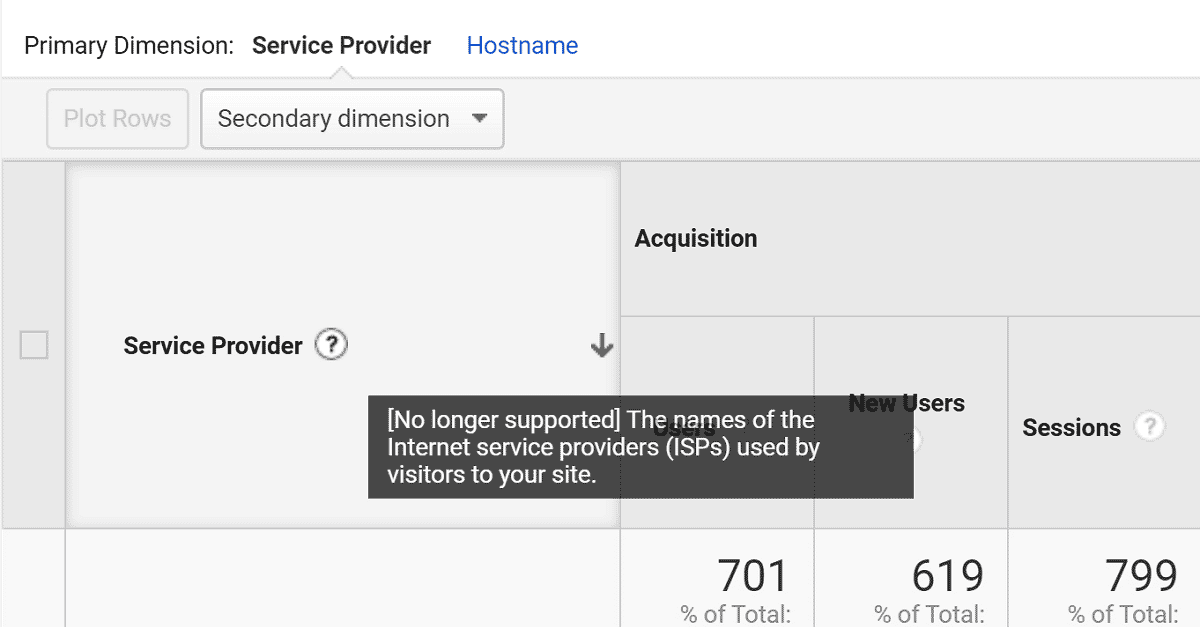Understanding the Principle of a 'Secondary Dimension' in Google Analytics: What Does It Mean?
Understanding the Principle of a 'Secondary Dimension' in Google Analytics: What Does It Mean?
Blog Article
Browsing the Depths of Second Dimension in Google Analytics: An In-depth Exploration on Its Capability
In the realm of digital analytics, the complexities of data interpretation frequently hold the secret to opening important understandings. Within the large toolkit of Google Analytics exists a feature that acts as a covert treasure for those that seek a deeper understanding of user behavior and internet site efficiency. Second dimensions, though relatively simple in the beginning look, harbor a wealth of untapped prospective waiting to be taken advantage of. As we start this trip to discover the nuanced performance of second measurements, we will certainly reveal exactly how this feature can light up patterns, reveal correlations, and inevitably lead the way for notified decision-making in the digital landscape.
Understanding Additional Dimensions in Google Analytics

Recognizing exactly how additional measurements work is crucial for leveraging the full power of Google Analytics. By integrating primary metrics with additional measurements, you can acquire beneficial understandings that drive notified decision-making and optimization techniques.
Leveraging Second Dimensions for Data Evaluation
Structure upon the foundational understanding of exactly how additional dimensions enhance information evaluation in Google Analytics, the utilization of these extra layers of information ends up being paramount in drawing out valuable insights for informed decision-making and optimization approaches. By leveraging secondary measurements, analysts can dig deeper right into the efficiency metrics by adding more context to the key measurements, hence discovering covert patterns and relationships that could not appear initially glance. This much deeper degree of analysis enables companies to much better recognize customer actions, recognize trends, and determine locations for renovation.
In addition, secondary dimensions provide an even more detailed view of the data, permitting division based on different criteria such as demographics, tools, traffic sources, and much more. This division promotes an extra granular analysis, enabling organizations to customize their projects and strategies to specific audience sections for boosted targeting and personalization. Basically, the critical usage of second dimensions empowers companies to make data-driven choices that drive development and success in the digital landscape.
Advanced Methods for Secondary Dimension Implementation
Exploring intricate approaches to harness the full potential of additional measurements in Google Analytics boosts the deepness and elegance of information analysis for strategic decision-making. One sophisticated strategy for executing second measurements is the use of custom-made dimensions. Additionally, combining additional dimensions with sophisticated sectors can offer also much more granular insights by using numerous layers of segmentation to the data.
Interpreting Insights Through Additional Dimensions

When interpreting understandings through secondary measurements, it is vital to consider the context of the information and exactly how different dimensions interact with each various other. Understanding which certain web traffic sources lead to higher conversion prices or identifying which devices customers like for making purchases can provide workable understandings for enhancing advertising and marketing projects and improving overall internet site efficiency. By carefully taking a look at the information with secondary measurements in mind, companies can make informed choices that drive meaningful results and boost their digital presence.
Enhancing Performance With Second Dimensions

One essential means to maximize efficiency with secondary dimensions is by segmenting data extra granularly. This enables you to separate certain elements that might be influencing your metrics and gain a much better his response understanding of what drives success or failing in your electronic efforts. For instance, by integrating second measurements such as 'gadget classification' and 'landing page,' you can identify which device types are most effective for specific touchdown web pages, allowing you to customize your techniques as necessary.
Furthermore, utilizing secondary dimensions can assist you determine fads, patterns, and relationships that might not appear when evaluating information with key dimensions alone. This deeper degree of analysis can cause even more informed decision-making and eventually improve the general efficiency of your internet site or electronic marketing campaigns.
Verdict
Finally, additional dimensions in Google Analytics play a crucial duty in improving information analysis and giving much deeper understandings right into internet site efficiency. By utilizing sophisticated strategies and interpreting the data effectively, businesses can optimize their methods and boost overall performance. Understanding the functionality of additional dimensions is crucial for making informed choices and driving success in the digital landscape.
By leveraging secondary dimensions, analysts can dive deeper into the performance metrics by including even more context to the her explanation main measurements, thus uncovering covert patterns and correlations that might not be evident at initial glimpse. One more helpful hints advanced method for carrying out additional dimensions is the use of personalized measurements.Having actually grasped innovative strategies like custom measurements and regex for additional dimension execution in Google Analytics, the following vital step is translating the useful insights obtained via these sophisticated information division approaches. Analyzing insights with second measurements involves examining the relationships in between the main and second measurements chosen, revealing patterns, patterns, and connections that may not be quickly evident when looking at the data in its whole.When interpreting insights with secondary measurements, it is crucial to consider the context of the data and how different dimensions connect with each other.
Report this page